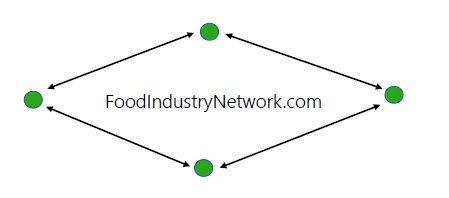Manitoba hog sector focuses on increased profitability

In the last five years, 30 new hog barns have been built in Manitoba.
That’s positive because very few hog barns were constructed between 2006 and 2016, partly because of the policies of the former NDP government, which imposed strict environmental regulations on the industry.
However, 30 is only six barns per year. That’s a tiny amount of new construction, seeing how there are 600 hog farms in the province and many of the barns are 20 to 25 years old. Those older barns will soon need to be replaced.
To spur investment, the Manitoba Pork Council has developed a strategic plan for the next five years, which general manager Cam Dahl presented during an online meeting of pork producers Oct. 27.
Dahl highlighted four goals, or key results, for the next five years. The first is growth and profitability. That includes profitability of independent producers, which are becoming a rare breed in the province. Maple Leaf Foods and Hylife, which operate pork processing plants in Manitoba, operate their own barns, and Hutterite colonies remain a major player in the industry.
“A resilient Manitoba pork sector is going to see producers in all segments of the industry…. We need to see all parts of it strong,” Dahl said. “And (provide) that economic opportunity for a wide range of producers, including independent producers and new entrants.”
The strategic plan states the disappearance of mid-sized hog producers, including independents, is a threat to the pork industry.
“Maintaining a critical mass of mid-sized producers is important because it enhances the sector’s natural ties to the communities in which they farm… an important factor in building and maintaining public trust.”
While public trust is important, farmers listening to Dahl’s presentation said two other factors are critical for growth and sustainability — hog prices and labour.
A number of producers, including former Manitoba Pork chair George Matheson, have been pushing for pricing reform in Western Canada. They contend that too little of the pork value of the pigs is shared with producers, leaving critically low margins over the course of the hog cycle.
That, they argue, cripples the ability to reinvest in hog barns and keep the sector going.
Some want a Quebec style pricing system, where packers share part of the cut-out value of the hog carcass with producers. Advocates of the Quebec model say it provides about $30 per pig more than western Canadians receive.
The Pork Council’s strategic plan does mention the pricing issue, noting that “recent price cycles have made it difficult for some producers… to maintain their operations on a prolonged basis.”
Other producers believe a lack of workers is the biggest risk to hog production. Attracting labour for hog farms and pork processing plants has been a challenge for years, but the problem is getting more severe.
“The biggest issue I see, day to day, in our operation is how hard it is to get labour,” said Henrik Thomsen, Manitoba Pork director and producer from Roblin. “The foreign workers, they want to work and they want to come, but it’s so hard to get them.”
Manitoba Pork can tackle the labour issue, but it probably needs to collaborate with other commodity groups and ag organizations because the worker shortage is an industry-wide problem, Dahl said.
There are challenges, but a couple of companies have shown that they have confidence in the future of Manitoba’s pork industry.
In early October, Maple Leaf Foods announced it had finished construction of a $182 million bacon plant in Winnipeg, which will add more than 300 pork processing jobs in the province
And in late September, Topigs Norsvin, a swine genetics company from The Netherlands, announced that it was building a farm in Manitoba.
Source: www.producer.com

